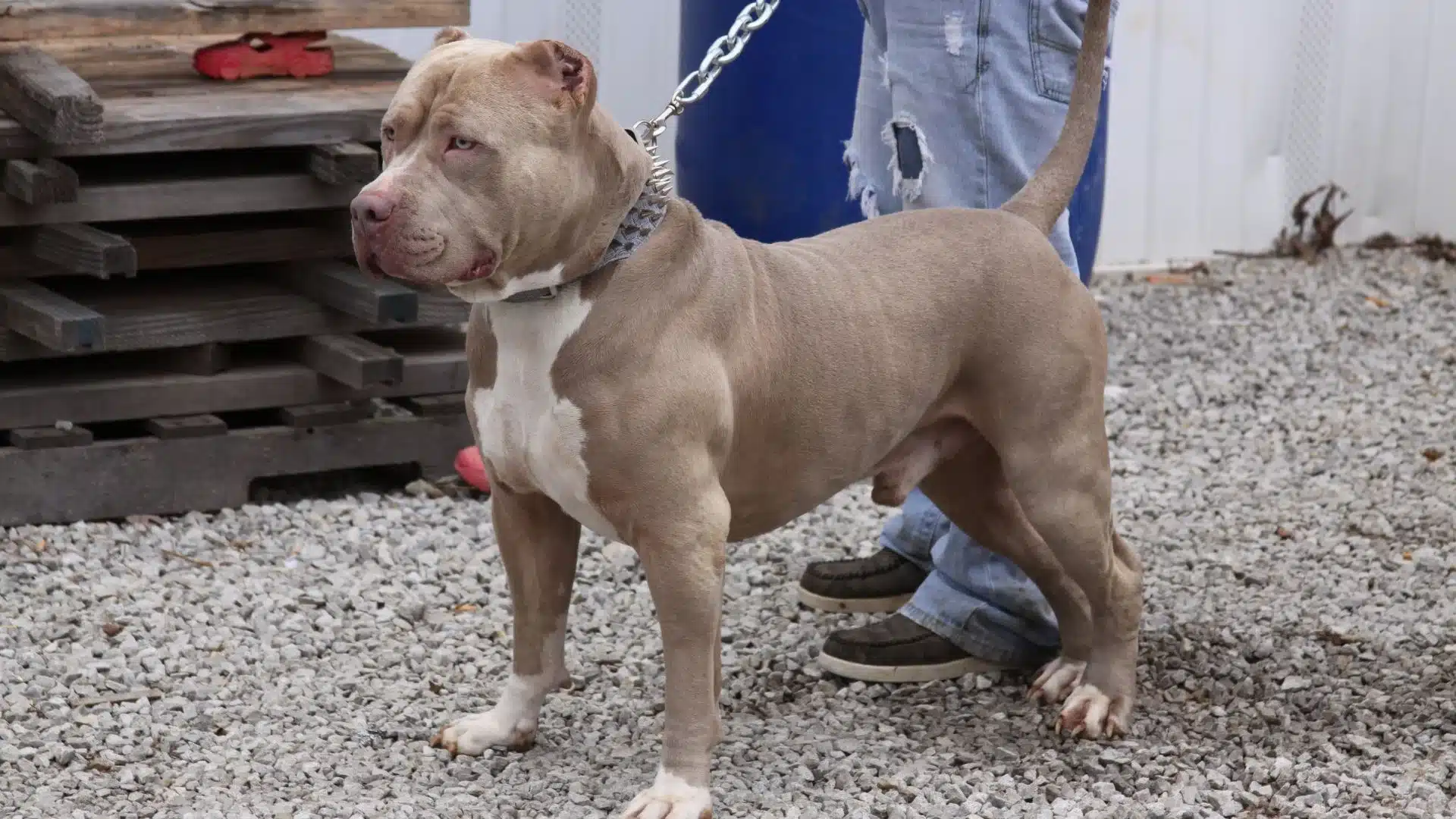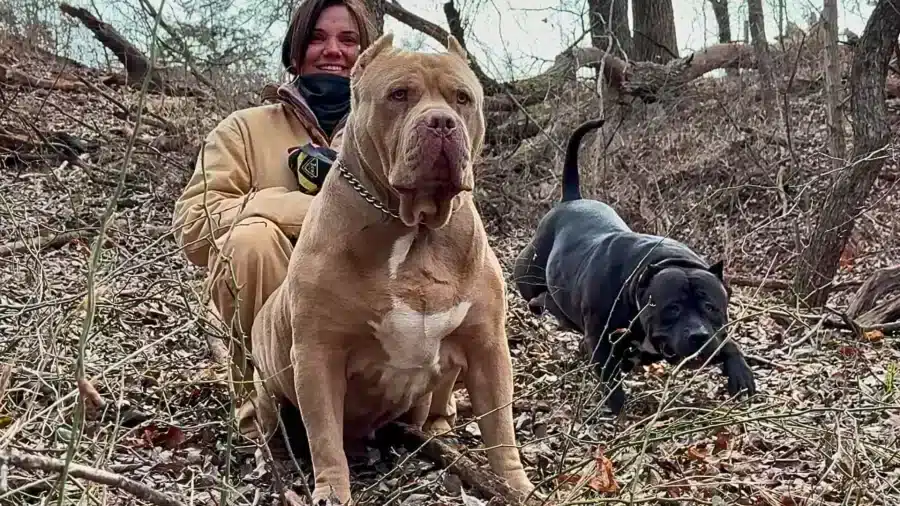Starting a pitbull bloodline is more than just breeding dogs; it’s about creating a lasting legacy. A bloodline refers to a specific lineage of dogs with carefully selected traits passed down over generations. Traditionally, a bloodline is established through consistent breeding on one side of the pedigree (dam or sire line) for at least four to five generations, ensuring consistency in traits and characteristics.
Modern breeders, however, often use the term "bloodline" loosely to describe a recognizable look rather than a true generational lineage. A common misconception is that a single influential dog can establish a bloodline, as seen with Gotti, which was based on a single dog rather than a developed lineage. Another misunderstanding is that branding a breeding program with a specific name automatically constitutes a bloodline when in reality, it requires multiple generations of selective breeding to establish consistent traits.
Many well-known "bloodlines," such as Gotti pitbull are more about branding than a carefully developed lineage. This guide will explain a true bloodline and how you can create your own through ethical breeding practices.
What is a Traditional Bloodline?
A traditional pitbull bloodline is established when at least 50% of the dogs in the first three generations come from the same breeder and maintain consistent traits. To verify lineage and ensure a bloodline meets this criterion, breeders should maintain thorough pedigree documentation, register each litter with kennel clubs, and conduct DNA testing to confirm genetic relationships. Additionally, working with reputable breeders and using pedigree software can help track lineage and prevent unintentional outcrossing, ensuring the integrity of the developing bloodline. To be considered a legitimate bloodline:
- There must be at least five generations of documented breeding on either the maternal or paternal side.
- The dogs should consistently display the desired physical and temperamental traits.
- The breeding program must be registered and documented through pedigree records and health clearances.
- Detailed lineage verification is necessary to avoid unintentional outcrossing and to ensure genetic integrity.
For example, if a breeder starts with a female pitbull and selectively breeds her offspring over five generations, with each generation maintaining desired characteristics, that would constitute a legitimate bloodline.
The Reality of Modern "Bloodlines"
Some well-known "bloodlines" today are not true generational bloodlines but rather a way to brand a particular breeder’s look.
- Gotti originated from a single dog rather than a developed lineage.
- Other popular American bully breeders claim to have bloodlines, but these are more about a recognizable aesthetic rather than generational breeding.
- Each of these breeders has a distinct "look," but that doesn’t necessarily mean they have developed a multi-generational bloodline.
Creating Your Own Pitbull Bloodline

1. Researching and Understanding Pitbull Bloodlines
Before starting, you must have a solid understanding of genetics, breed standards, and the history of successful bloodlines.
- Learn the breed standard: Understand the physical and behavioral traits that define an ideal pitbull.
- Study pedigrees: Analyze lineage documents to identify traits you want to focus on.
- Join breeder communities: Networking with experienced breeders can provide valuable mentorship.
- Understand potential pitfalls: Research common genetic disorders and how to avoid them through responsible breeding.
2. Setting Goals for Your Bloodline
Every successful bloodline starts with clear objectives.
- Are you focusing on health, temperament, structure, or all three?
- What will make your bloodline unique?
- Are you committed to ethical breeding practices?
- Have you planned for potential challenges such as genetic diversity, demand, and long-term sustainability?
A true bloodline takes at least 10 years to establish, as rushing the process can lead to inbreeding and genetic health issues.
3. Selecting Your Foundation Dogs
Your foundation dogs are crucial in shaping your bloodline’s future. Consider the following:
- Health: Perform genetic health screenings to avoid hereditary issues.
- Temperament: Select dogs with stable and trainable personalities.
- Conformation: Ensure your dogs meet breed standards.
- Pedigree: Choose dogs with strong lineage records to avoid inbreeding and maintain genetic diversity.
- Verify Lineage: Ensure your foundation dogs come from reputable breeders with documented pedigrees.
4. Developing a Breeding Plan
A strategic breeding plan is necessary to ensure consistency.
- Planned pairings: Match dogs with complementary traits.
- Avoid overbreeding: Give dogs recovery time between litters.
- Record keeping: Use pedigree software to track each generation’s traits.
- Genetic diversity management: Avoid excessive linebreeding to reduce health risks and improve genetic robustness.
5. Raising and Training Your Puppies
The way you raise your puppies influences their future success.
- Early socialization: Expose them to various environments and people.
- Health care: Follow a strict vaccination and veterinary care schedule.
- Training: Start obedience training early for better behavior.
- Temperament assessment: Evaluate puppies for desirable traits before deciding which to keep for future breeding.
6. Marketing Your Bloodline
Once your bloodline is established, marketing plays a key role in its recognition.
- Build an online presence: Create a professional website and social media profiles.
- Invest in high-quality photography: Showcase your dogs professionally.
- Share your breeding philosophy: Build trust with transparency.
- Use contracts: Protect your bloodline with clear sales agreements.
- Educate buyers: Provide detailed information on lineage, health, and training to establish credibility.
Maintaining and Improving Your Bloodline
A bloodline is not a one-time creation—it requires ongoing evaluation and refinement.
- Assess each litter: Identify traits that align with your breeding goals.
- Seek feedback: Stay in touch with buyers to understand how your dogs develop.
- Network with reputable breeders: Introduce new traits while avoiding genetic bottlenecks.
- Commit to ethical breeding: Avoid excessive inbreeding or line breeding to maintain health and diversity.
- Adapt to evolving standards: Stay informed about breed trends and health advancements to continuously refine your program.
The Time and Dedication Required
Establishing a quality bloodline that can last for generations takes time—often more than a decade. Many breeders take shortcuts, leading to severe health issues due to excessive line breeding. At Manmade Kennels, we have been working toward developing a true bloodline for nearly 20 years, always prioritizing ethical practices and the long-term well-being of our dogs. While we have made significant progress, we are still striving to perfect the Manmade Kennels bloodline.
Conclusion
Creating a pitbull bloodline is a rewarding but long-term commitment. Breeders may face challenges such as genetic health issues, maintaining consistency in traits, and establishing credibility in the breeding community. Overcoming these challenges requires thorough research, meticulous record-keeping, and ethical breeding practices. Additionally, dealing with misinformation in the industry and avoiding unethical shortcuts like excessive inbreeding are crucial to building a respected bloodline.
By staying dedicated and continuously refining their breeding program, breeders can successfully create a lasting and reputable bloodline. It requires meticulous planning, ethical breeding, and patience to develop a line that stands out for its quality, health, and temperament. At Manmade Kennels, we support aspiring breeders by providing high-quality pitbull puppies, mentorship, and resources. If you’re ready to start your journey in breeding, reach out to us today and take the first step in building your legacy.
I am a highly skilled content writer and SEO expert with a passion for helping small businesses succeed in the digital world. With my extensive knowledge of the latest SEO techniques and strategies, I have successfully assisted numerous clients in improving their website rankings, generating more leads, and driving a significant increase in website traffic.
As a professional content writer and SEO expert, I am confident in my ability to contribute significantly to the success of small businesses. If you are seeking a results-driven, highly skilled digital marketer who can help you increase your ranking, convert new leads, and see a substantial improvement in website traffic, I would welcome the opportunity to collaborate with you.
Website: https://manmadewebsites.com/
Email: hello@digitalmarketingchap.com

